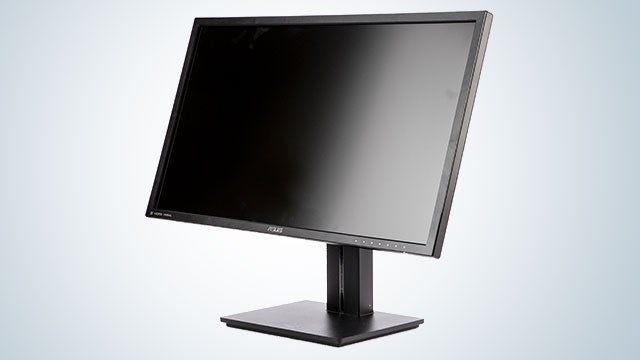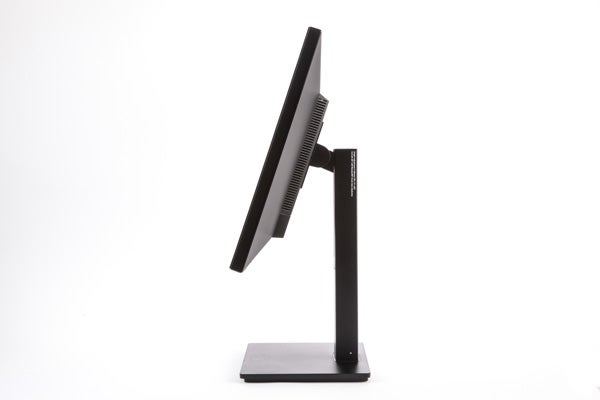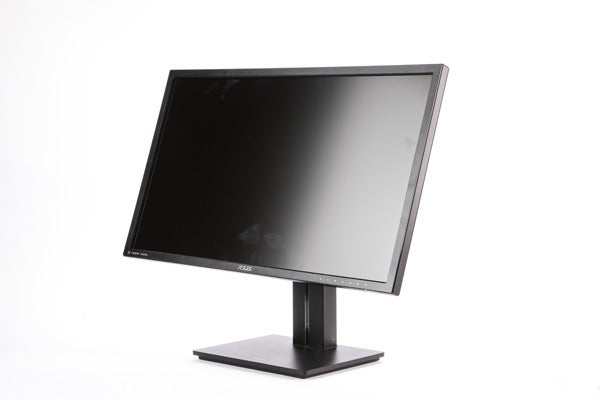Asus PB287Q Review - Input Lag, Image Quality and Verdict Review
Input Lag, Image Quality and Verdict
A 4K gaming monitor for £600. Is there a catch?

Sections
- Page 1 Asus PB287Q Review
- Page 2 Input Lag, Image Quality and Verdict Review
Asus PB287Q: Image Quality
Our initial good impression of the ‘out of the box’ settings was confirmed when we came to test the Asus PB287Q. We measured a white point of 6,652K, which is very close to our preferred 6,500K target. We often see TN-based monitors hovering closer to 7,000K, so this is a good start.
Contrast, however, isn’t anything special. The 819:1 contrast ratio falls a little below the quoted 1,000:1, while the 0.3nits black point is good for a TN panel but average as a whole. This is a common trend among 4K monitors, though, which so far haven’t quite reached the quality heights of lower resolution monitors.
The Asus PB287Q covers 87% of the sRGB colour space, which is about what we’d expect for a decent TN monitor. Accuracy is good, too, with a DeltaE of 1.95 a very decent result — we’re happy with anything less than 2.0 most of the time.
This is all fairly promising and subjectively the Asus PB287Q produces decent images. They’re not outstanding in any particular way, and we did detect a very slight brownish tinge to some greys, but photos and videos look decent and don’t reveal any serious weaknesses.

Apart, that is, from betraying a poor vertical viewing angle. Any image or video with a solid block of colour shows this weakness very clearly, with a very obvious difference in colour consistency from the top of the screen to the bottom. This means that while any single point measured with a colourimeter is accurate, that’s not necessarily what you’ll see when sat in front of the screen.
Ultimately, the poor vertical viewing angle means it’s impossible to ever sit in the effective sweet-spot; some part of the screen will always appear off. How much this matters depends entirely on how you want to use the Asus PB287Q. For gaming this isn’t too great a problem, and provided you’re not too fussy you only lose a little detail in videos. But any serious photo editing is a no-no on this screen, and the pivot feature is of questionable value given this weakness, too.
In comparison, the horizontal viewing angle on the PB287Q is fairly good. You lose a little brightness and detail, but it’s adequate for a monitor you’ll largely be sitting directly in front of. The brightness uniformity is decent, too, though the results don’t reflect the viewing angle issue.
Asus PB287Q: Input Lag and Gaming
It’s here that the Asus PB287Q shows its true strength. Using our Leo Bodnar Lag Tester, we measured an average input lag of just 10.6ms. Anything less than 20ms is a very good result, so the Asus PB287Q is an excellent monitor for gaming. The fact it’s 4K and supports 60Hz over DisplayPort only reinforces this strength. This is a great monitor for gaming.

Should I buy the Asus PB287Q?
If you desperately want a 4K monitor for gaming then this is a very good buy. Dodgy vertical viewing angle aside, it’s a decent monitor with exceptionally low input lag that’s perfect for gaming.
The only obvious caveat here is it’s £100 more than the similarly specced and featured AOC U2868PQU, but then the AOC doesn’t (so far as we know) have a flicker-free backlight like the Asus. If you value this feature then it’s probably money well spent; if not, consider the cheaper AOC or Samsung instead.
Beyond the specific need for 4K gaming, however, we’d advise a little caution. The Asus PB287Q is cheap for a 4K monitor, but it isn’t cheap for a monitor this size. For the same money you could buy the outstanding Viewsonic VP2772, which is basically a professional grade monitor thanks to its native 10-bit colour IPS panel, and there’s no shortage of good high-res gaming monitors, either.
Verdict
If you need a 4K gaming monitor then we recommend the Asus PB287Q. It delivers exactly what you need at a reasonable price, and has a flicker-free backlight. For everyone else, however, we’d recommend waiting a little longer.
Next, read more monitor reviews or look at our best monitors round-up.

